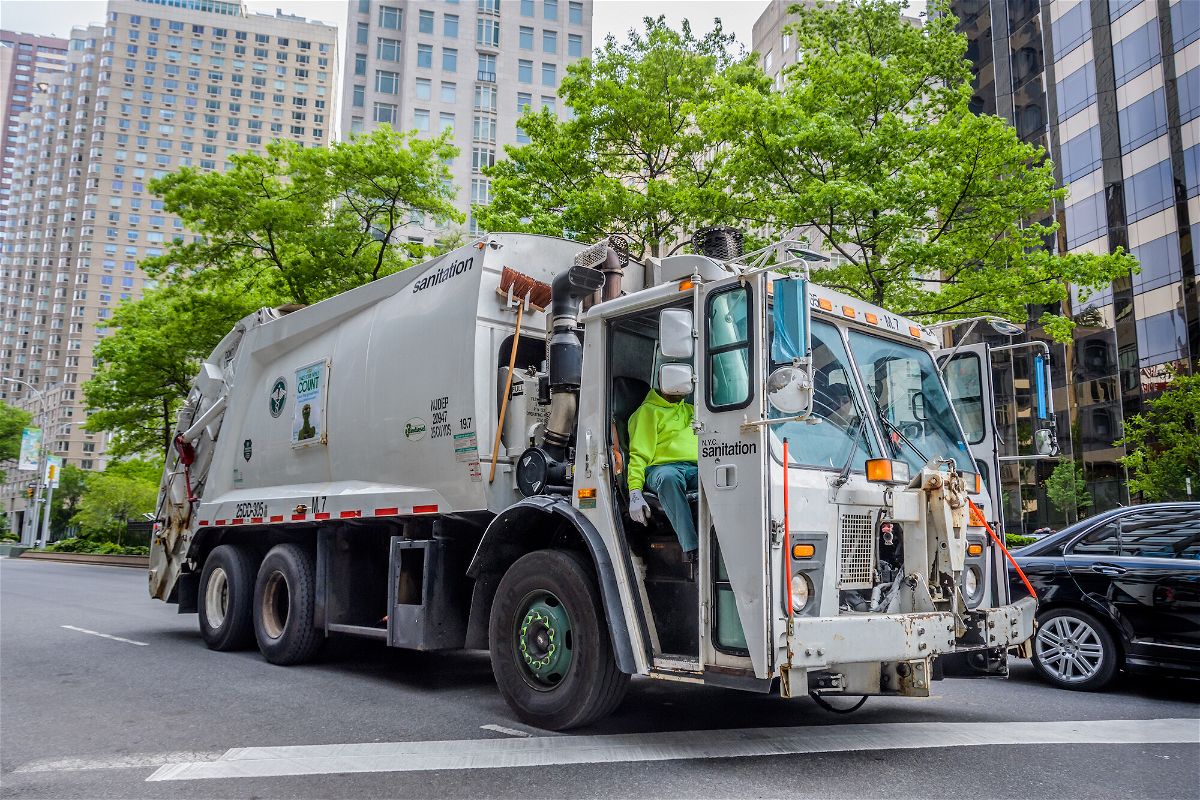NYC, in battle against rat scourge, asks residents to take the trash out later

A garbage truck is pictured driving around Manhattan. New York City officials are moving to limit the number of hours residential and commercial trash can sit on the curb before it's picked up.
By Ray Sanchez, CNN
Noting that New York City has become an “all-night, all-you-can-eat rat buffet,” city officials are moving to limit the number of hours residential and commercial trash can sit on the curb before it’s picked up.
Sanitation Commissioner Jessica Tisch, who was joined by Mayor Eric Adams at a news conference this week, made the announcement that she said “rats are absolutely going to hate,” changing the time garbage bags can be piled curbside to 8 p.m. from 4 p.m. Residents can take out their trash by 6 p.m. if the bags are placed in sealed containers, under the new rules. Garbage must still be placed at the curb by midnight.
“The rats don’t run this city,” the commissioner said. “We do.”
But urban ecologist Michael Parsons is skeptical of the city’s latest move to combat the mounting complaints about trash piles and rat sightings on New York sidewalks.
“A lot of the rodentologists have mixed feelings about this,” Parsons said of the plan. “On one hand, we’re happy something’s happening. On the other, we have argued that it is far better to work on the problem proactively rather than some kind of knee-jerk reaction.”
With restaurants closed or open with limited capacity during the coronavirus pandemic, rodent activity in urban areas increased as rats searched for sources of food other than restaurant dumpsters.
“We knew, because of all the new food resources rats had from all the new people working from home, cooking from home and more waste created from home, there was a chance there would be a wide population expansion and potentially even increase … and so here it’s happening,” Parsons said.
Adams told reporters New York City rules regarding the hours that garbage was allowed to sit curbside for pickup had been in place since the late 1960s.
Tisch said the city would also allow large buildings with nine or more units to opt-in once a year to an early morning set-out time of 4 a.m. to 7 a.m.
“We are doing way more collection on the midnight shift rather than the 6 a.m. shift,” she said. “Approximately 25 percent of all of our collection now happens at midnight. And for the large buildings that opt into the 4 to 7 a.m. setouts, we will be designing tailored routes to get the trash off the street almost immediately.”
The goal, Tisch said, is to reduce the number of hours that garbage sits curbside from about 14 hours to four hours with the additional collections on the midnight shift.
“This will reduce the amount of time the trash is on the street before collection, keeping our streets cleaner for a longer period of time and discouraging rodents from running their own version of what we like to say, open restaurants,” Adams said.
“No more tripping over black bags during rush hour. No more watching these bags litter our sidewalks earlier in the day.”
On Monday, Orkin, an Atlanta-based pest control service, released its annual ranking of US cities based on the number of new rodent treatments from September 1 to August 31 of each year.
For the eighth consecutive year, Chicago took first place, followed by New York and then Los Angeles.
Michael Deutsch, an urban entomologist based on Long Island, doesn’t believe the change in hours will lead to any appreciable decrease in New York City’s rodent population.
“The impact, in my opinion, would be minimal because rats are very resourceful. They are survivors,” he said.
“The mayor has (his) hands full. And this is an attempt on his part — and I take my hat off to him — to do the right thing. But I don’t think it’s going to have much of an impact. The optics (are) going to be nice … Whether that will translate into lowering the rodent population, it’s extremely doubtful.”
The-CNN-Wire
™ & © 2022 Cable News Network, Inc., a Warner Bros. Discovery Company. All rights reserved.


